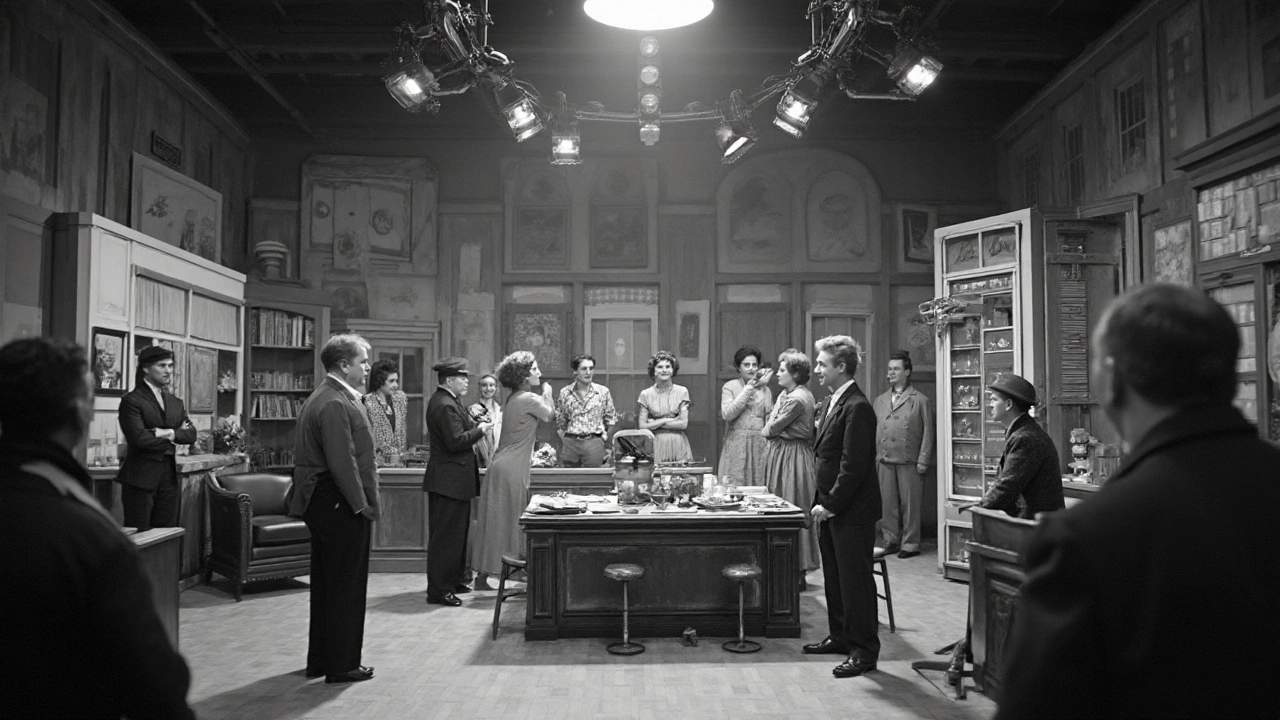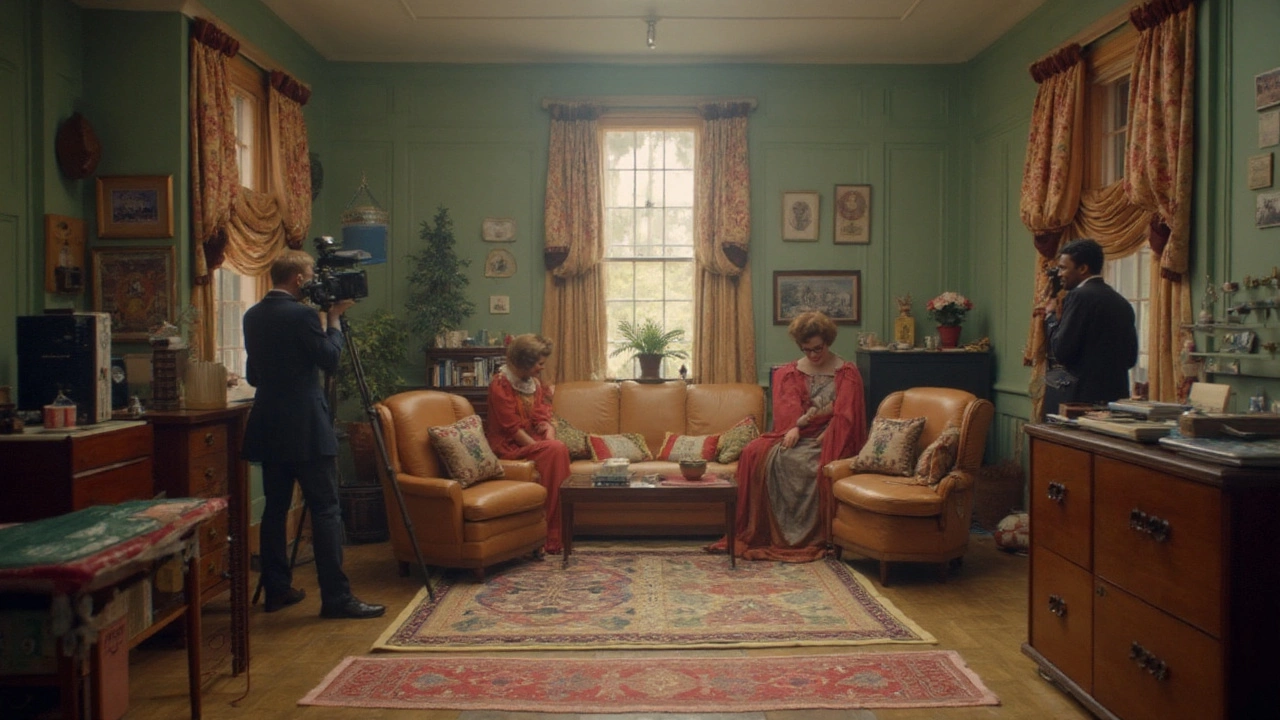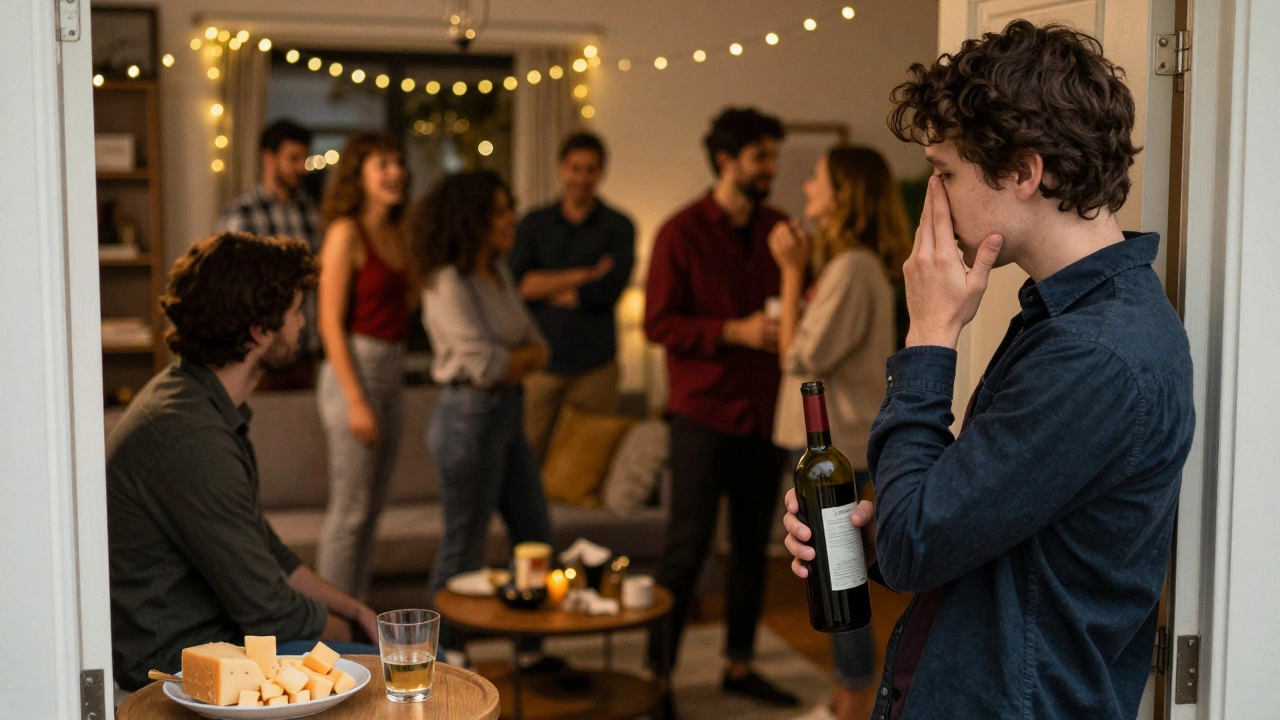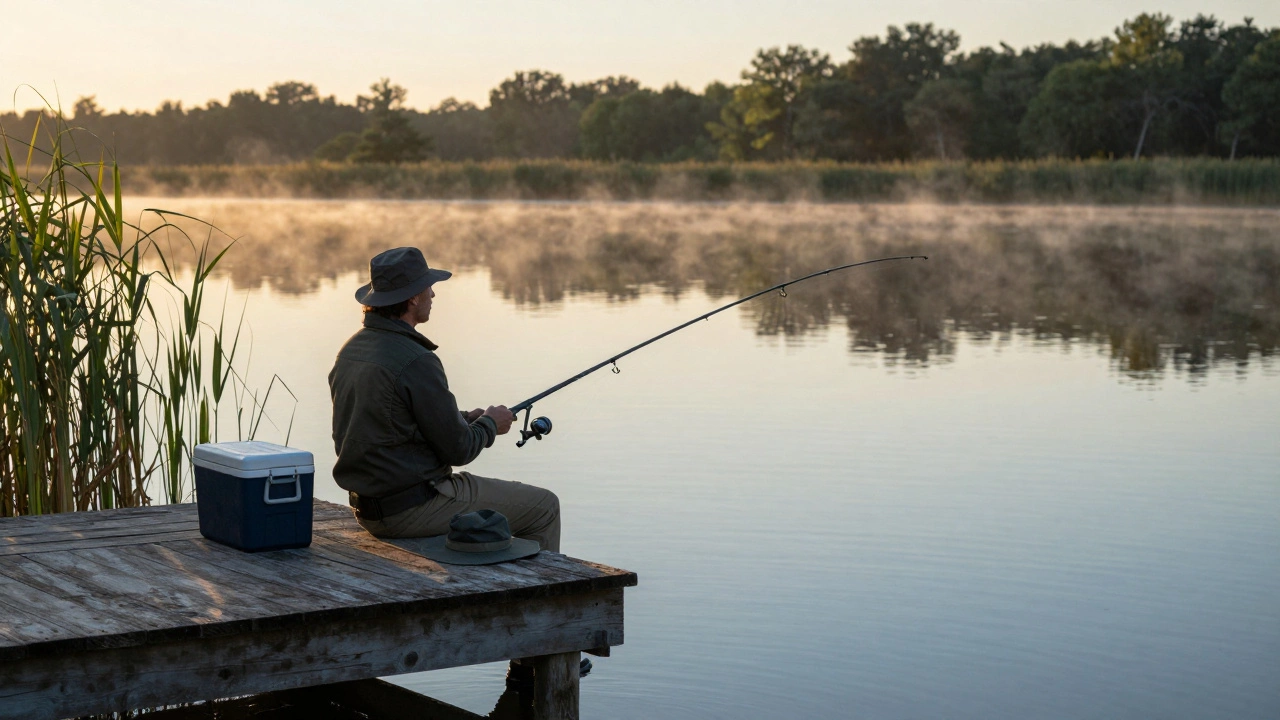First Filmed Sitcom: How 'I Love Lucy' Revolutionized 1950s TV Comedy

What if I told you the 1950s sitcom that kicked off the modern television era wasn’t just funny—it actually rewrote the script for how TV gets made? People had to change the way they watched, made, and even thought about comedy shows because of one ground-breaking production. Overnight, the meaning of "live television" shifted, and a new style of sitcom was born right before the eyes of millions. 'I Love Lucy' didn’t just hand out laughs, it shifted the DNA of TV forever, and you probably still feel its ripple effects each time you hit play on your favourite show.
The Live-TV Era: Laughs That Couldn’t Be Repeated
Back in the late 1940s and early 1950s, sitcoms came at you live. Not "sort of live" or "edited to feel live." We’re talking actual actors hitting their marks in real-time, scripts happening as you watched, and the only place it lived on was inside your memory. Blow a line on stage? Everyone saw it. Props went missing? Someone panicked and tried to work it into the joke. For TV, it was like theatre, but with a camera squeezed into the audience—it all vanished as soon as the credits rolled.
This wasn’t because anyone thought it was better that way. Filming was expensive and technology was primitive; videotape hadn’t really arrived. If you lived outside New York, you usually watched a low-quality "kinescope" copy—basically a camera pointed at a TV screen as the episode played. No one looked good, the picture was fuzzy, and the gags came with a healthy serving of static. Shows like "The Goldbergs" and "The Honeymooners" might seem like icons now, but they were stuck inside this fuzzy, fleeting format.
The audience at home got left in the dark if they missed an episode. TV sets weren’t cheap either (in 1952, a decent one cost $199, which today is about $2,100 when you adjust for inflation). There was no rerun, no replay, and if you weren’t parked on your couch at showtime, too bad. It’s wild to think about now, with on-demand and streams always floating around us, just how limited TV felt. And yet, for most of America, this was the only way to soak up comedy.
But it’s that very limitation that made what happened next such a massive leap. All it took was one couple who refused to let their show fade away, and suddenly everything changed.
Lucy and Desi Rewrite the Rules: Why Filming Was a Game-Changer
'I Love Lucy' wasn’t just a hit—it was the avalanche that buried old TV in the dust. Lucille Ball and Desi Arnaz didn’t just act; they demanded to reinvent the entire process. CBS wanted their new show to be done in New York, straight to air, with that usual live audience feel. Lucy and Desi lived in Los Angeles. And Desi, sharp as he was, had a wild idea: what if, instead of shooting it live, they actually filmed it—like a movie—but with all the jokes and energy of live comedy?
This was unheard of. Sitcoms on film? For television? Sure, movies did it, but TV was supposed to be quick, cheap, disposable. Filming meant shelling out for reels, sets, and way more time—plus, doing it with a three-camera setup had never been done for TV. Insiders scoffed at the idea, saying it was too costly and far too risky. But the couple wasn’t interested in "how it’s always been." They pushed, they risked their own money, and they partnered with Karl Freund, the same cinematographer who had worked on "Metropolis" and "Dracula." And just like that, Desilu Productions was born.
This move changed everything. For one, you could now rerun the show anywhere in the world. The clean, vibrant quality didn’t disappear after one night of broadcast. 'I Love Lucy' felt alive, whether you watched the first time around or on a sleepy Sunday afternoon weeks later. Studios noticed. If you could repeat episodes, you could sell syndication rights. Suddenly, there was money to be made long after the actors left the stage.
And it wasn’t just about repeats. Filming allowed better sound and lighting (big bonus: Lucy’s wild facial expressions were crystal clear). Everyone in the country—no matter the city—got the same sharp, funny, professionally-made product. No more blurry kinescope. The audience at home could finally laugh at the same punchlines the studio audience heard, which meant way more people tuned in, and advertisers took notice fast. Ratings shot up, sponsorship poured in, and a whole generation of shows scrambled to copy the formula. Yes, 'I Love Lucy' absolutely pioneered the modern sitcom as we know it.

Behind the Scenes: The Genius of the Three-Camera Filming Technique
Before 'I Love Lucy,' there wasn’t a standard method for shooting a sitcom. Everything was clunky, and improvisation was the name of the game. But Desi Arnaz, with the cinematic expertise of Karl Freund, invented the three-camera setup that’s still king today. What’s that mean? Instead of a single static shot, three cameras ran side by side: one focused on wide shots, another on close-ups of Lucy or Ricky, and a third for wherever the juicy action was happening. All the coverage you’d need, captured at once. No more stopping and starting or breaking up jokes to get another angle. The laughter read real because the performances stayed real; the jokes never got stale.
Lighting also got a total overhaul. TV shows filmed for kinescope looked drab because lighting had to suit both stage and camera. Freund designed a lighting grid that kept the stars glowing (and Lucy famously always looked her best). Actors hit their marks in a way that didn’t feel forced; they could play off the live audience, feeding off laughs the same way stage actors do, without worrying about missed cues or bad camera angles.
Editing was another revolution. Since you had footage from three angles, editors stitched together the best performances in post-production. Sometimes, if Lucy or Desi absolutely nailed a gag, they’d use that shot as the centerpiece. The result was smoother dialogue, fresher jokes, and a rhythm that felt both polished and spontaneous—something "live" sitcoms could only dream about.
If you’re curious just how it all came together, check out this stat sheet below on the Desilu setup:
| Technique | Live Shows (Pre-Lucy) | 'I Love Lucy' Filmed Approach |
|---|---|---|
| Broadcast Method | Live or Kinescope Recorded | Filmed on 35mm |
| Camera Setup | Single Camera, Minimal Angles | Three-Camera, Multiple Angles |
| Picture Quality | Blurry, Grainy (Kinescope) | Crisp, Reusable (35mm Film) |
| Editing Options | Minimal to None | Extensive Editing Allowed |
| Rerun Potential | Low | High (Syndication Standard) |
Today, almost every sitcom you watch—whether it’s "The Big Bang Theory," "Friends," or "Modern Family"—borrows from this playbook. And honestly, the rhythm of the jokes, even how actors pause for laughter after a punchline, is pure Lucy.
Lasting Influence: How 'I Love Lucy' Still Shapes Our TV Today
Most folks don’t realize that when they laugh at their favourite modern sitcom, they’re really experiencing a show built on Lucy and Desi’s blueprint. The three-camera technique didn’t just catch on—it became an industry standard. "The Dick Van Dyke Show," "All in the Family," "Cheers," "Seinfeld": all used it. The reason is simple: nothing else delivers that live, infectious laughter, sharp performances, and slick editing quite like it.
And there’s the syndication angle, too. Because "I Love Lucy" was filmed, studios could rerun it endlessly. The show itself has never gone off the air since its premiere in 1951—a claim few series can make. The global success 'I Love Lucy' had in other countries, thanks to dubbed and subtitled reruns, showed studios how enormous the international TV market could be. Think about that next time you catch a foreign subtitled comedy binge-worthy on Netflix; that business model starts with Lucy.
Even the way shows worked backstage changed. Desilu didn’t just make money from "I Love Lucy." Their studio cranked out "Star Trek" and "The Untouchables." Lucille Ball, by the mid-1960s, became one of the most powerful and influential women in television history as the head of Desilu. She proved TV could build true media empires if creators took control of how their work was made and distributed. Not bad for a sitcom that most doubted would work outside the comfort zone of a New York theatre, eh?
So next time you catch a rerun or see a sitcom news headline, remember: the first filmed sitcom—the one that made it normal for us to watch crystal-clear, laugh-packed comedy anytime—was "I Love Lucy." Its format doesn’t just live on; it made everything we love about comedy shows possible in the first place. That’s not just trivia—it’s TV history, and it all started with some wild risks and a couple of gutsy comedians who refused to play it safe.





